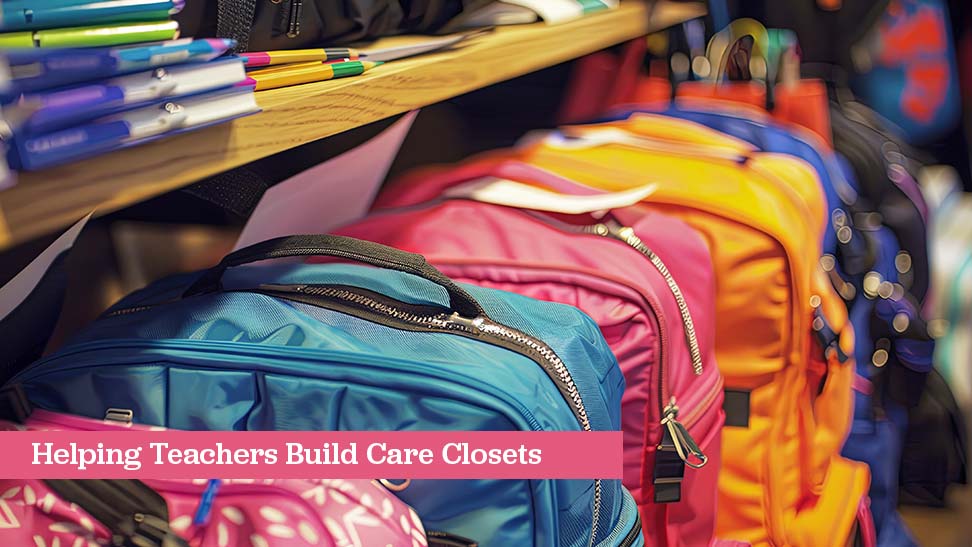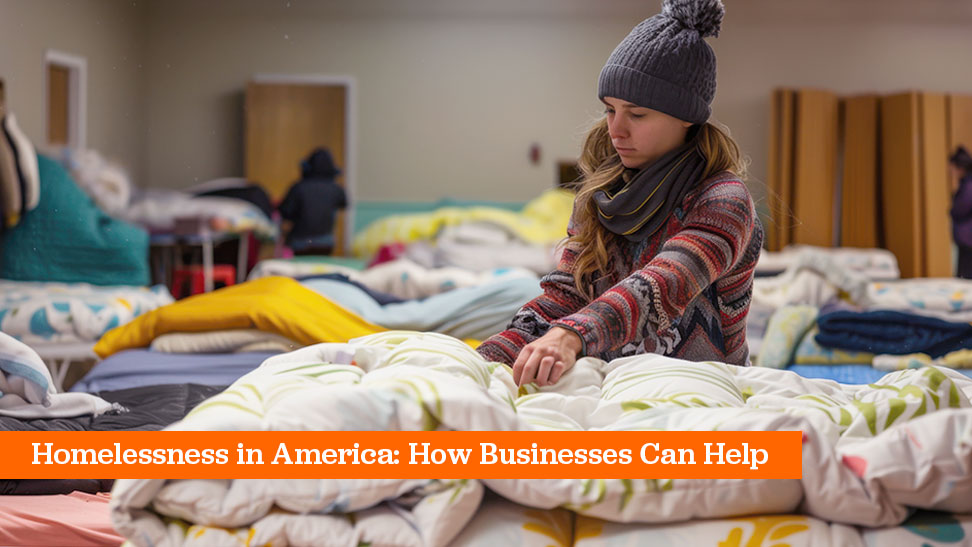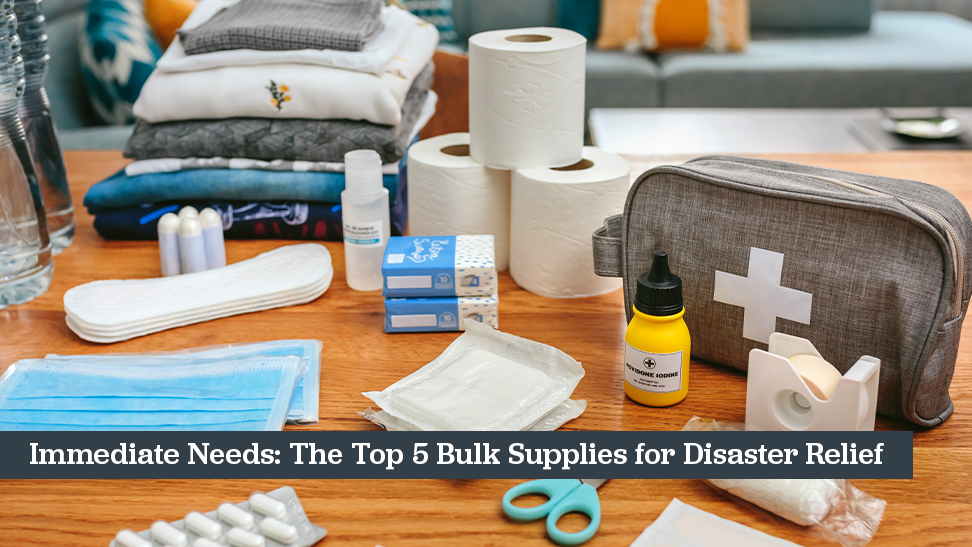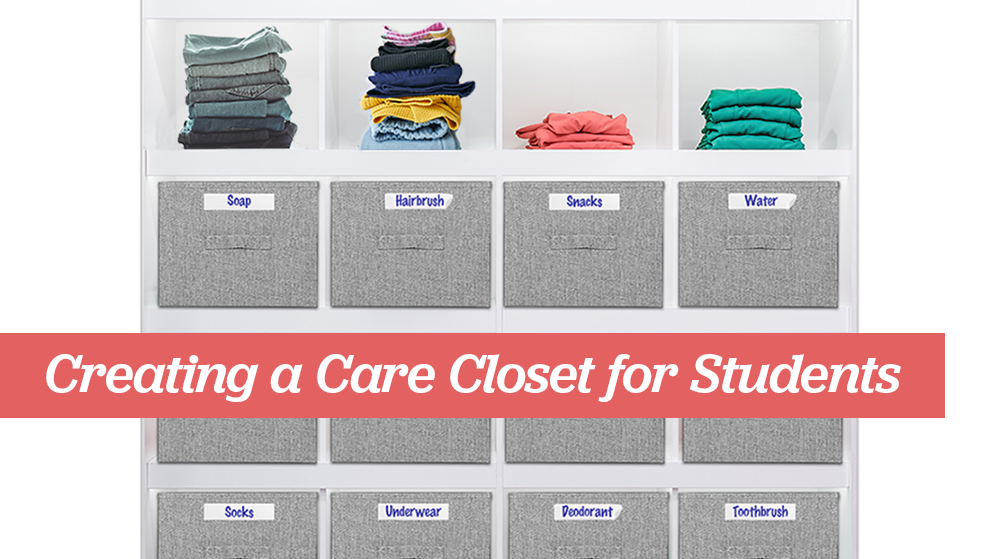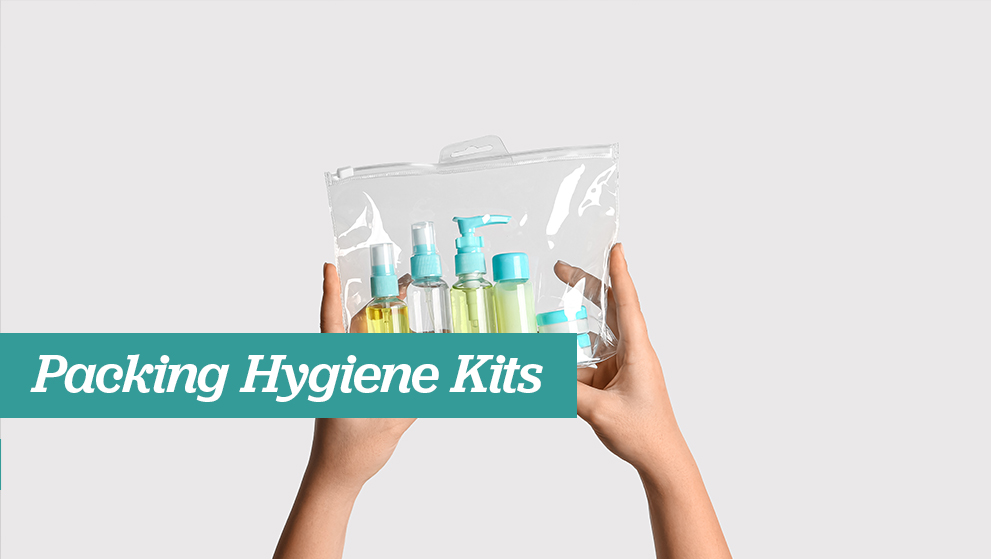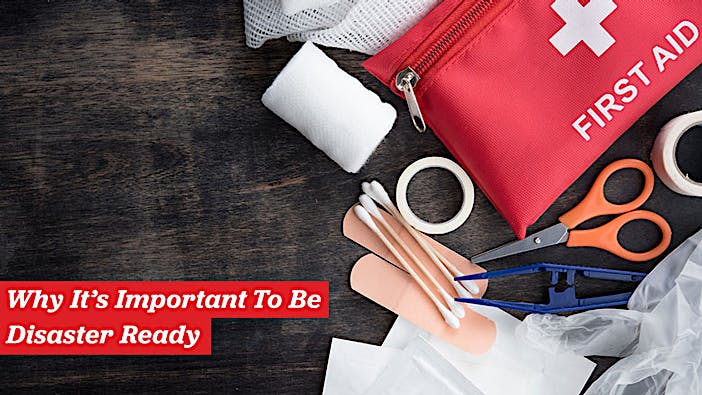Care Closets have become lifelines for many students, especially in underserved communities. These distinct spaces, maintained by teachers and school staff, are stocked with academic supplies and personal care items to help students thrive, regardless of their circumstances. Care closets offer everything from pencils and notebooks to hygiene products, winter clothing, and even non-perishable snacks … Continue reading Back-to-School, Round Two: Helping Teachers Build Care Closets
The Joy and Necessity of Corporate and Individual Giving During the Holidays
With the holidays now upon us, we like to reflect on the season's true meaning. As a team dedicated to the organizations and people that serve those in need across America, DollarDays is reminded of this every day — yet even more so at this time of year. For many, the holidays are a time … Continue reading The Joy and Necessity of Corporate and Individual Giving During the Holidays
Homelessness in America: How Businesses Can Help
Millions of Americans face profound challenges daily — especially those lacking one of the most basic human necessities: a home. November is National Homelessness Awareness Month, a time to reflect on the persistence of this widespread crisis impacting nearly every corner of our nation. It calls for an urgent, unified response. Now more than ever, … Continue reading Homelessness in America: How Businesses Can Help
Immediate Needs: The Top 5 Bulk Supplies for Disaster Relief
In the wake of a natural disaster, communities often face severe shortages of essential supplies and the immediate focus is on survival and relief. In such times of crisis, businesses that offer bulk items at low prices can play a crucial role in disaster response and recovery efforts. DollarDays partners with various organizations to provide … Continue reading Immediate Needs: The Top 5 Bulk Supplies for Disaster Relief
Support Back-to-School with High-Quality, Affordable Uniform and Dress Code Basics
Apparel matters. Clothing serves as more than just covering and protection. It can be a medium through which we express who we are—our values, our mood, and our style. There is debate about whether school uniforms or dress codes benefit students. Many believe that uniformity instills a sense of belonging and respect and reduces social … Continue reading Support Back-to-School with High-Quality, Affordable Uniform and Dress Code Basics
Creating a Care Closet for Students: 6 Steps and What to Stock
The connection between health and academic success is fairly obvious. Healthy students miss less school, participate, and tend to learn more. Personal hygiene is part of that success formula. Why? Because good personal hygiene prevents the spread of germs and illness among students. Once more, not having personal care essentials – a toothbrush, toothpaste, shampoo, … Continue reading Creating a Care Closet for Students: 6 Steps and What to Stock
Homelessness and the Struggle for Oral Care
Every year, it is estimated that 2 million people are considered homeless and either living on the streets or in shelters. Of this population, families account for about 38% and children approximately 25%. Homelessness can be the result of countless unforeseen circumstances, including everything from low-paying jobs to changes in public health assistance. With a … Continue reading Homelessness and the Struggle for Oral Care
Packing a Hygiene Kit
From people in disaster zones to those experiencing homelessness, having the basic essentials can make a world of difference. DollarDays provides the necessary, top-requested items to pack and hand out to somebody in need. We encourage your entire church, company, or organization to get together and host a packing party. Buying hygiene items in bulk … Continue reading Packing a Hygiene Kit
Back-to-School Supply Checklists for Every Grade
Back-to-school season is an exciting time for students, parents, and teachers alike. It can also be a stressful time, as the cost of school and classroom supplies can quickly become very expensive. Also, classrooms often need replenishment multiple times throughout the school year, not only at the beginning. By purchasing school essentials in bulk, it … Continue reading Back-to-School Supply Checklists for Every Grade
Why It’s Important To Be Disaster Ready
As wild weather across the country continues, the ability to respond to disasters and emergencies requires significant resources and continued coordination among local authorities, emergency response teams, and disaster relief organizations. When a disaster strikes, it’s hard not to panic and it can seem like a hassle to plan for something that may not even … Continue reading Why It’s Important To Be Disaster Ready
